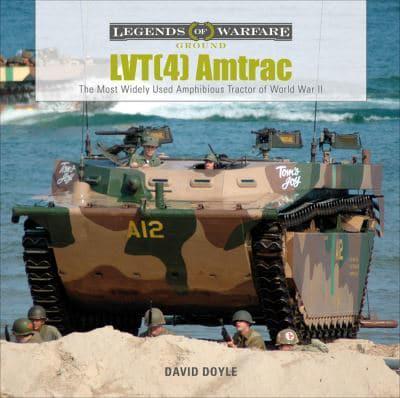LVT(4) Amtrac: The Most Widely Used Amphibious Tractor of World War II
Usually shipped within 24 hours
UK deliveries from £5.95
Delivery & Returns
Delivery & Returns
We use the Royal Mail, DHL Express or UPS for our customers. For UK addresses, deliveries under 10kg are a standard £4.95 via Royal Mail Tracked 48 Service. For orders over 10kg and overseas customers, postage is calculated for you at checkout once you have entered your postal address. This price, does not include any potential custom charges that may apply, depending on the product or destination, as every country has very different import duties / taxes. Online exclusive products (such as trainers) will be delivered to you directly from the printer, separate from other items in your order, but your postage fee covers ALL items in your order.
If you are unhappy with your purchase, please email shop@tankmuseum.org within fourteen (14) working days of receiving your goods, and return it to us at the address below, in its original condition, unopened (with any seals and shrink-wrap intact) and we will issue you a full refund or replace it. Goods must be returned at your own cost. If the item is faulty, you do not need to return it, we will send you a replacement free of charge.
Description
Description
By David Doyle
Hardback
Originally developed as a swamp rescue vehicle by millionaire philanthropists Donald and John Roebling, the LVT (Landing Vehicle, Tracked), or "Alligator," was widely used in the Allied island-hopping campaign in the Pacific during World War II.
Powered by a mammoth aircraft-type engine, the LVT(4) could cross treacherous coral reefs, deep water, and swamps to land troops ashore. The LVT(4) also introduced the rear ramp, which when lowered allowed troops to rush out, rather than clamber over the tall sides as on previous models.
Produced by Food Machinery Corporation (FMC), railway equipment manufacturer St. Louis Car Company, and automobile maker Graham-Paige, over 8,000 LVT(4)s were built during the war; today only a few remain. Through dozens of archival photos as well as detailed photographs of some of the finest existent examples of these vehicles, this iconic landing vehicle is explored, and its history is explained.
![LVT(4) Amtrac: The Most Widely Used Amphibious Tractor of World War II Book [variant_option4]](http://tankmuseumshop.org/cdn/shop/products/9780764360107.jpg?v=1748336589&width=1214)

![LVT(4) Amtrac: The Most Widely Used Amphibious Tractor of World War II Book [variant_option4]](http://tankmuseumshop.org/cdn/shop/products/9780764360107.jpg?v=1748336589&width=112)
![Tank Museum Playing Cards Game [variant_option4]](http://tankmuseumshop.org/cdn/shop/files/ProductShoot_10_10_2025035.jpg?v=1760358498&width=176)
![Tank Museum Wrapping Paper - Two sheet pack Wrapping Paper [variant_option4]](http://tankmuseumshop.org/cdn/shop/products/Wrapp_Paper_All.jpg?v=1748337915&width=176)
![LVT(4) Amtrac: The Most Widely Used Amphibious Tractor of World War II Book [variant_option4]](http://tankmuseumshop.org/cdn/shop/products/9780764360107.jpg?v=1748336589&width=640)



